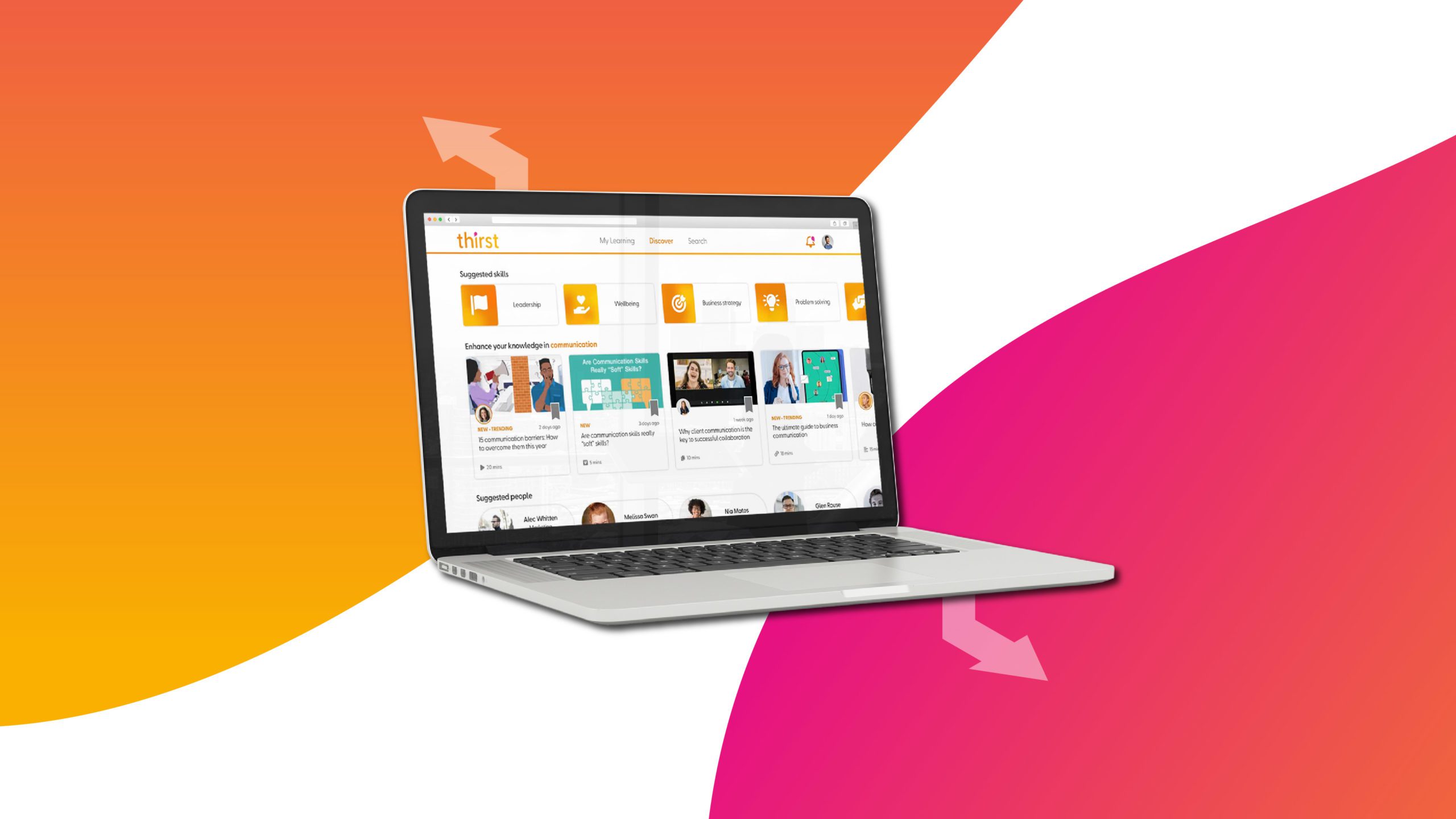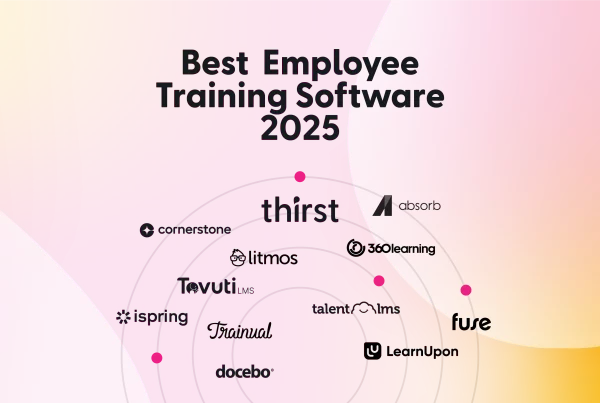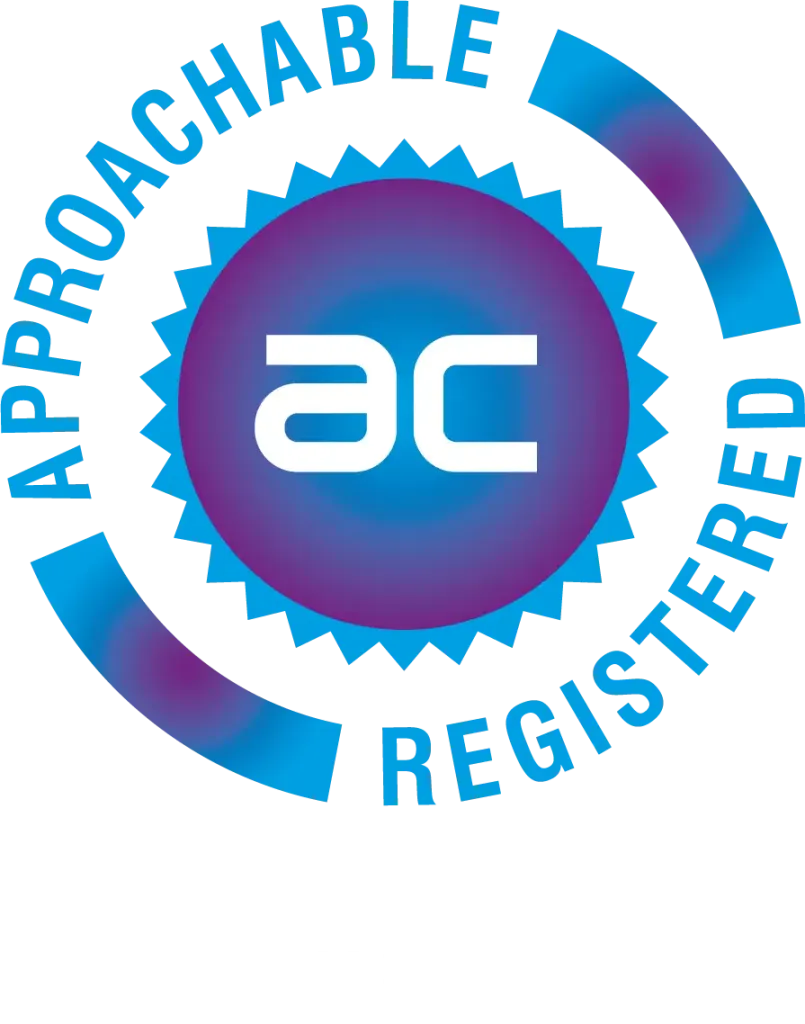Continuous learning is a cornerstone for success in our fast-paced and ever-changing world. 🚀
And as businesses strive to stay competitive and adapt to evolving market trends, the demand for efficient and comprehensive learning solutions has never been greater.
At Thirst, we understand that many learning platforms are available in 2023, so choosing the one that best aligns with your organisation’s unique needs can be daunting.
We can help! 💪
In this article, we will walk you through everything you need to know about choosing a learning platform, the most effective questions you should ask a new supplier, and the essential details to consider when sourcing a learning platform.
From assessing a platform’s features and functionalities to understanding its scalability and integration capabilities, we leave no stone unturned in helping you make an informed choice.💡
The right learning platform can unleash your workforce’s full potential, fostering a culture of continuous improvement and growth. 📈
Whether you’re a small start-up or a multinational corporation, our insights will cater to organisations of all sizes and industries.
So, let’s get into it!👇
How to Choose a Learning Platform
There are many factors to consider when choosing a learning platform.
Some of the most important considerations include…
Your organisation’s learning goals 🥅
What are your organisation’s goals for its learning program? Is it focused on employee onboarding, compliance training, or professional development? Your learning platform should support these goals.
Your organisation’s learners 🧑💼👩💼
Who are your learners? What are their learning needs and preferences? Your learning platform should be easy to use and accessible to all learners.
Your budget 💰
How much are you willing to spend on a learning platform? A wide range of learning platforms are available, so it’s essential to find one that fits the organisation’s budget. You might find our previous guide on the best HowNow LXP Alternatives for 2023 helpful.
Your organisation’s technical infrastructure 💻
Do you have the necessary hardware and software to support the learning platform? The learning platform should be compatible with the organisation’s existing systems.
Your organisation’s future needs 🗺️
Your chosen learning platform should be scalable and adaptable to meet the organisation’s changing needs.
It is also essential to evaluate the learning platform’s features and functionality.
Some of the key features to look for include…
✅ Ease of use
Your learning platform should be easy to use for both learners and administrators.
✅ Content management
Your learning platform should make creating, managing, and delivering content easy.
✅ Reporting and analytics
Your learning platform should provide reports and analytics that can be used to track learner progress and measure the effectiveness of the learning program.
✅ Support and maintenance
A reliable vendor that provides responsive customer support should support your learning platform.
✅ Integrations with other systems
If your organisation uses other learning or business systems, you’ll want to make sure the learning platform can integrate with them. This will make managing learner data easier and tracking progress across systems.
✅ Security and Compliance
The learning platform should comply with your organisation’s data security and privacy policies.
✅ Scalability
If your organisation plans to grow its learning program, you’ll want to ensure the learning platform can scale to meet your needs.
✅ Cost and value
Consider the platform’s pricing structure and evaluate its value concerning your organisation’s budget. Compare pricing plans, features, and support services to determine the best cost-value balance for your needs.
Not All Learning Platforms Are Created Equal: How to Prepare
When choosing a learning platform, we recommend noting down and asking these 14 essential questions. 💭
1. What are our specific learning and development goals?
Define your organisation’s objectives and identify the skills or knowledge you want employees to acquire through the platform.
2. Does the learning platform offer a wide range of content types?
Assess whether the platform supports various content formats such as text, videos, interactive modules, assessments, and discussion forums to accommodate different learning styles.
3. Is the platform user-friendly and intuitive?
Determine if the platform has a user interface that is easy to navigate, understand, and interact with, ensuring a positive user experience for employees.
4. Does the platform support mobile learning?
Check if the platform is mobile-responsive or has dedicated mobile apps, allowing employees to access learning materials anytime, anywhere, and on any device.
5. What customisation and branding options are available?
Consider whether the platform can be customised to reflect your organisation’s branding and if you can tailor the learning experience to match your specific requirements.
6. Can the platform integrate with our existing systems?
Assess if the learning platform can integrate with your organisation’s existing software, such as HR systems or performance management tools, to streamline data and processes.
7. What analytics and reporting capabilities does the platform provide?
Evaluate the platform’s tracking and reporting features to determine if it can provide valuable insights into learner progress, engagement, and completion rates.
8. Does the platform support social learning and collaboration?
Determine if the platform allows for interactive discussions, group projects, and knowledge sharing among learners to foster a collaborative learning environment.
9. What support and customer service options are available?
Inquire about the platform’s customer support services, including technical assistance, training resources, and ongoing support to ensure smooth implementation and usage.
10. What are the pricing and licensing models?
Understand the platform’s pricing structure, including subscription fees, user-based licensing, or other content creation or system maintenance costs.
11. Can the platform scale as our organisation grows?
Consider the scalability of the learning platform to accommodate increasing numbers of learners and additional learning programs as your organisation expands.
12. What security measures are in place?
Assess the platform’s security protocols, data encryption, and compliance with relevant privacy regulations to protect sensitive information.
13. Are there any success stories or customer testimonials?
Request case studies or references from other organisations implementing the platform to gain insights into their experiences and outcomes.
14. What is the roadmap for future platform enhancements?
Inquire about the platform’s future development plans and how it aligns with emerging trends and technologies in the learning and development space.
LMS, LXP, LCMS, Skills Platform? – Understanding the differences between solutions
There are various solutions for managing learning within your organisation.
Among the most commonly discussed are…
- Learning Management Systems (LMS)
- Learning Experience Platforms (LXP)
- Learning Content Management Systems (LCMS)
- Skills Platforms
While they all revolve around learning and development, each solution serves a distinct purpose and offers unique features.
Understanding the differences between these solutions is crucial for organisations to select the most suitable tool that aligns with their specific requirements and objectives.
Let’s take a look…👀⬇️
Learning Management System (LMS)
A Learning Management System (LMS) is a software application designed to facilitate the administration, management, and delivery of educational and training programs.
It is a central hub for organising, tracking, and delivering online learning content, including courses, modules, quizzes, and assessments.
LMSs provide a range of features such as user management, content management, course scheduling, progress tracking, and reporting.
They offer tools for creating and delivering multimedia-rich content, managing learner enrollment, and monitoring learner progress and performance.
LMSs are commonly used in educational institutions, corporations, and other organisations to streamline learning processes, provide access to learning resources, and monitor learner engagement and outcomes.
Learning Experience Platform (LXP)
A Learning Experience Platform (LXP) is a digital learning solution that creates personalised and engaging user learning experiences.
Unlike traditional Learning Management Systems (LMS), which primarily deliver structured content and courses, LXPs prioritise learner-centric approaches and self-directed learning.
LXPs offer a variety of features to support individualised learning paths, content curation, social learning, and collaboration.
They often utilise artificial intelligence and machine learning algorithms to recommend relevant content based on user preferences, interests, and learning goals.
LXPs encourage learners to explore a broader range of resources, including videos, articles, podcasts, and interactive content, both within and outside the organisation.
They also emphasise social learning by facilitating knowledge sharing, user-generated content, and peer-to-peer interactions.
An LXP aims to create a more dynamic and engaging learning environment that promotes continuous learning and skill development.
Learning Content Management System (LCMS)
A Learning Content Management System (LCMS) is a software platform designed to create, manage, and deliver learning content.
While similar to Learning Management Systems (LMS), LCMSs focus primarily on the content development and lifecycle management aspects of learning and training.
LCMSs provide tools and features to create, organise, store, and collaborate on learning materials such as text-based documents, multimedia assets, assessments, and simulations.
They enable instructional designers, subject matter experts, and content developers to create and structure learning content in a modular and reusable format. This modularity allows for easy repurposing and customisation of content to suit different learning contexts and delivery methods.
LCMSs also offer version control and workflow management capabilities, ensuring content creators can collaborate effectively, review and approve content, and track changes throughout content development.
Additionally, LCMSs often provide functionalities for content localisation and translation, making it easier to adapt and deliver content to diverse audiences.
Once the content is created and organised within the LCMS, it can be published and distributed through various channels, including LMSs, websites, mobile applications, or other digital platforms.
LCMSs help organisations streamline content creation and management, ensuring that learning materials are up-to-date, consistent, and easily accessible to learners.
Skills Platform
A Skills Platform is a digital solution that focuses on assessing, developing, and managing the skills and competencies of individuals within an organisation.
It provides a centralised platform where employees or learners can identify their current skill sets, set learning goals, access relevant learning resources, and track their progress in acquiring new skills.
Skills Platforms typically offer a range of features such as skills assessment tools, competency frameworks, personalised learning paths, and skill tracking dashboards.
They may utilise various assessment methods, including self-assessments, peer assessments, and automated assessments, to gauge the proficiency level of individuals across different skills.
Based on the assessment results, Skills Platforms recommend targeted learning resources such as courses, modules, videos, articles, or interactive exercises that align with the learner’s skill development goals.
These platforms may leverage machine learning and artificial intelligence technologies to provide personalised recommendations based on individual learning preferences, performance data, and skill gaps.
Furthermore, Skills Platforms often integrate with other learning solutions like Learning Management Systems (LMS) or Learning Experience Platforms (LXP) to provide a holistic learning experience.
Now that you are more familiar with the different types of learning platforms available let’s look at some of the other considerations to consider when choosing the solution for you. 💡
Other Considerations When Sourcing a Learning Platform
📱 Mobile Accessibility
In today’s mobile-driven world, ensuring the learning platform is mobile-friendly and supports learning on various devices, such as smartphones and tablets, is essential. This allows learners to access content anytime, anywhere and facilitates a more flexible and convenient learning experience.
🕹️ Gamification and Engagement
Look for platforms incorporating gamification elements, such as badges, leaderboards, rewards, and progress tracking. These features can enhance learner engagement, motivation, and participation in the learning process.
🖥️ Integration Capabilities
Consider the platform’s ability to integrate with your organisation’s other systems and tools, such as HR software, learning management systems (LMS), customer relationship management (CRM) software, or content authoring tools. Integration can streamline processes, data sharing, and reporting, making your learning initiatives more efficient.
🌍 Multi-language and Localisation Support
If your organisation operates globally or has a multilingual workforce, consider a platform that supports multiple languages and offers localisation features. This ensures that content can be translated and adapted to cater to diverse language and cultural needs.
♿ Accessibility and Inclusivity
Ensure that the learning platform complies with accessibility standards, such as WCAG 2.0 or 2.1, to accommodate learners with disabilities. Features like closed captioning, screen reader compatibility, and adjustable font sizes can promote inclusivity and enable equal learning opportunities for all users.
🧠 Continuous Updates and Innovation
Assess the platform provider’s track record of updates and new feature releases. Look for a platform that regularly introduces enhancements and keeps up with emerging trends and technologies in the e-learning industry. This ensures that your organisation’s learning platform remains up-to-date and offers the latest features and functionalities.
🚦 Vendor Reputation and Support
Research the reputation and credibility of the platform provider. Read reviews, seek recommendations, and assess their customer support services. A reliable vendor with a robust support system can offer assistance, resolve issues promptly, and provide long-term partnership and value.
🫶 Trial or Demo Period
Take advantage of trial periods or demos offered by platform providers whenever possible. This allows you to test the platform firsthand and evaluate its features, user experience, and suitability for your organisation’s needs before committing to a purchase.
Questions Learning Platform Vendors May Ask You
When you reach out to a platform provider, they will need more information about your organisation.
Here are some of the questions they may ask…
What are your organisation’s learning and development objectives?
The vendor will want to know the specific goals and outcomes you aim to achieve through the learning platform.
What is the size of your organisation and the number of learners you expect to have on the platform?
This helps the vendor determine the scalability and pricing considerations.
What types of content do you currently have or plan to have on the platform?
The vendor will inquire about the existing learning materials, such as videos, documents, or interactive modules, and understand your content creation needs.
Are there any specific features or functionality you require in a learning platform?
This could include customisation options, gamification elements, social learning capabilities, or integrations with other systems.
How do you envision the user experience for your learners?
The vendor will ask about your expectations for the platform’s interface, ease of use, and navigation.
Do you have any specific compliance or security requirements?
This is important for the vendor to ensure their platform meets your organisation’s security and data protection standards.
What are your preferred implementation timelines and project milestones?
The vendor will inquire about your desired timeline for platform deployment and any critical milestones to be considered.
Are there any specific reporting and analytics needs?
The vendor will ask about the type of data and insights you require to track learner progress, engagement, and program effectiveness.
What is your budget for a learning platform?
The vendor will want to understand your financial constraints to provide suitable pricing options and proposals.
Do you have any integration requirements with existing systems?
The vendor will ask about any existing software or systems (such as HRIS, LMS, or talent management tools) that need to integrate with the learning platform.
What level of support and training do you expect from the vendor?
This question helps the vendor understand your support needs during the implementation process and ongoing platform usage.
Have you worked with any learning platforms in the past?
The vendor may ask about your previous experiences with learning platforms to gain insights into your expectations and pain points.
Are there any specific case studies or success stories you would like to share?
If you have any specific examples of successful learning initiatives or desired outcomes, the vendor will be interested in learning more about them.
Choosing the Right Learning Platform Is Worth It
Selecting the right learning platform for your organisation is a critical decision that can significantly impact the effectiveness of your learning and development initiatives.
By considering various factors, such as your organisation’s goals, learner needs, available resources, and desired features, you can make an informed choice that aligns with your specific requirements.
Learning Management Systems (LMS) offer comprehensive administration and tracking capabilities, making them ideal for organisations that require structured and centralised management of learning content and learner progress.
On the other hand, Learning Experience Platforms (LXP) prioritise learner-centric approaches, personalisation, and social learning, fostering a dynamic and engaging learning environment.
If content creation and management are your primary focus, a Learning Content Management System (LCMS) can provide the necessary tools and workflows for developing and repurposing modular learning content.
Lastly, Skills Platforms are specifically designed to assess, develop, and manage the skills and competencies of individuals within your organisation, facilitating personalised skill development and tracking.
Remember to evaluate each platform’s scalability, user-friendliness, integration capabilities, support services, and security features.
Additionally, consider conducting pilot tests, gathering feedback from key stakeholders, and leveraging free trials or demos to ensure the platform meets your expectations.
By thoroughly understanding your organisation’s unique needs and thoroughly researching available options, you can confidently choose a learning platform that optimises learning outcomes, enhances learner engagement, and supports the growth and development of your workforce.
Investing time and effort in selecting the right learning platform will ultimately lead to a more effective and impactful learning experience for your organisation.
Thirst can assist you in efficiently and cost-effectively prioritising learning within your organisation.
Here’s how…
Thanks to a dedicated portal, employees can now access insights, resources, and company-wide expertise effortlessly, enabling them to learn faster and smarter.
Additionally, Thirst assists in identifying knowledge gaps among individuals and teams, resulting in more thoughtful and precise outputs from your team. 👌
But don’t just take our word for it!
Over 100 L&D teams trust Thirst to support knowledge sharing within their organisation.
Want to try it for yourself?
Get a free 1:1 demo of the Thirst platform now.
For more e-learning insights, resources and information, discover the Thirst blog.
You may also enjoy:
The 4 phases of a successful employee onboarding process | Product Knowledge: What it is & How to Develop it | Overcoming The 7 Biggest Barriers to Learning Success (and How to Smash Through Them)







